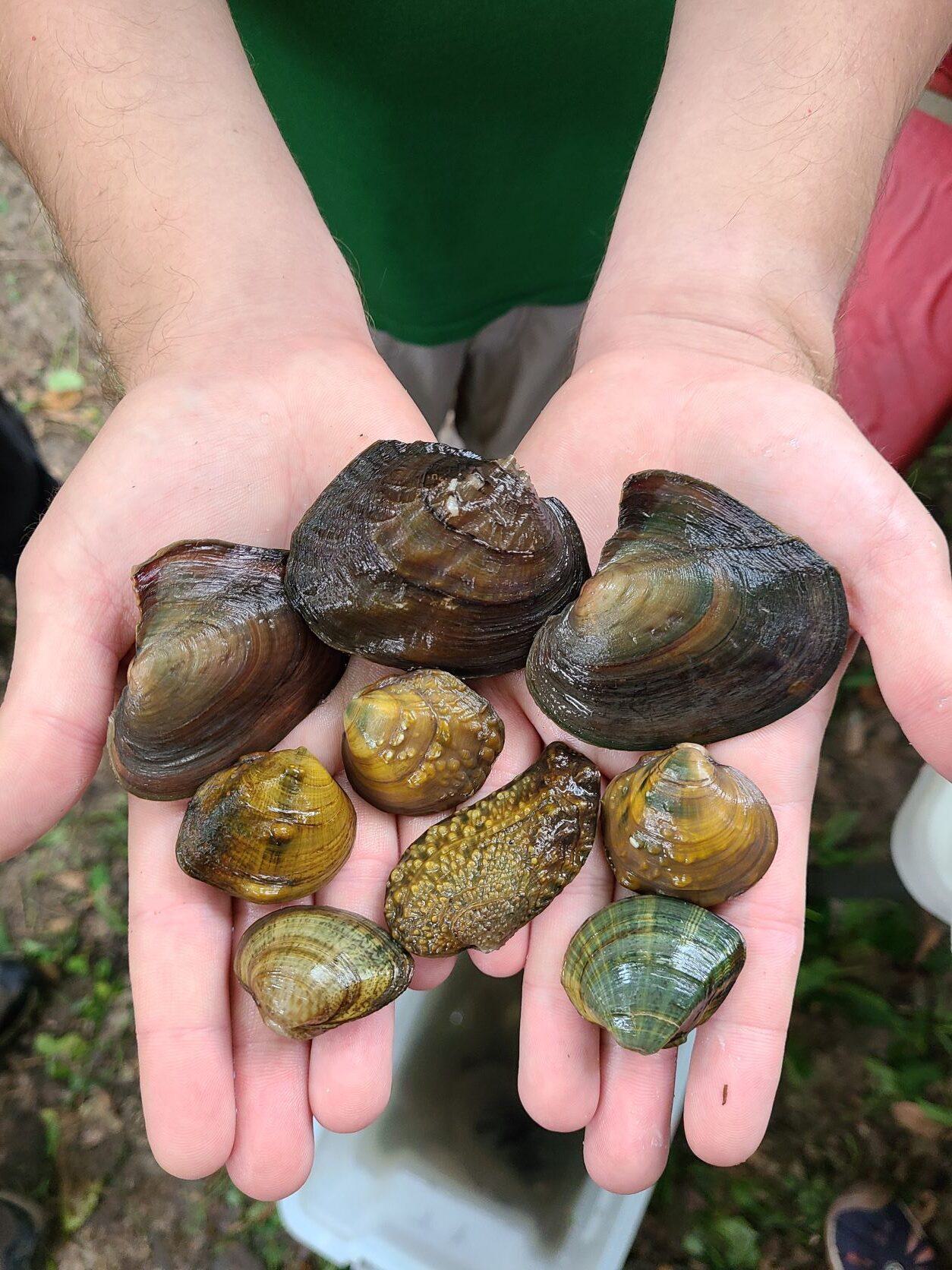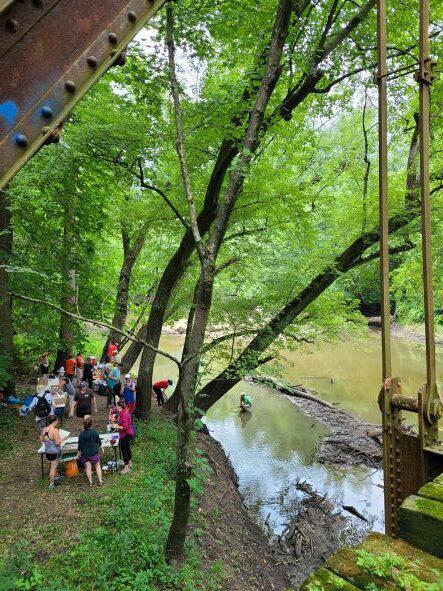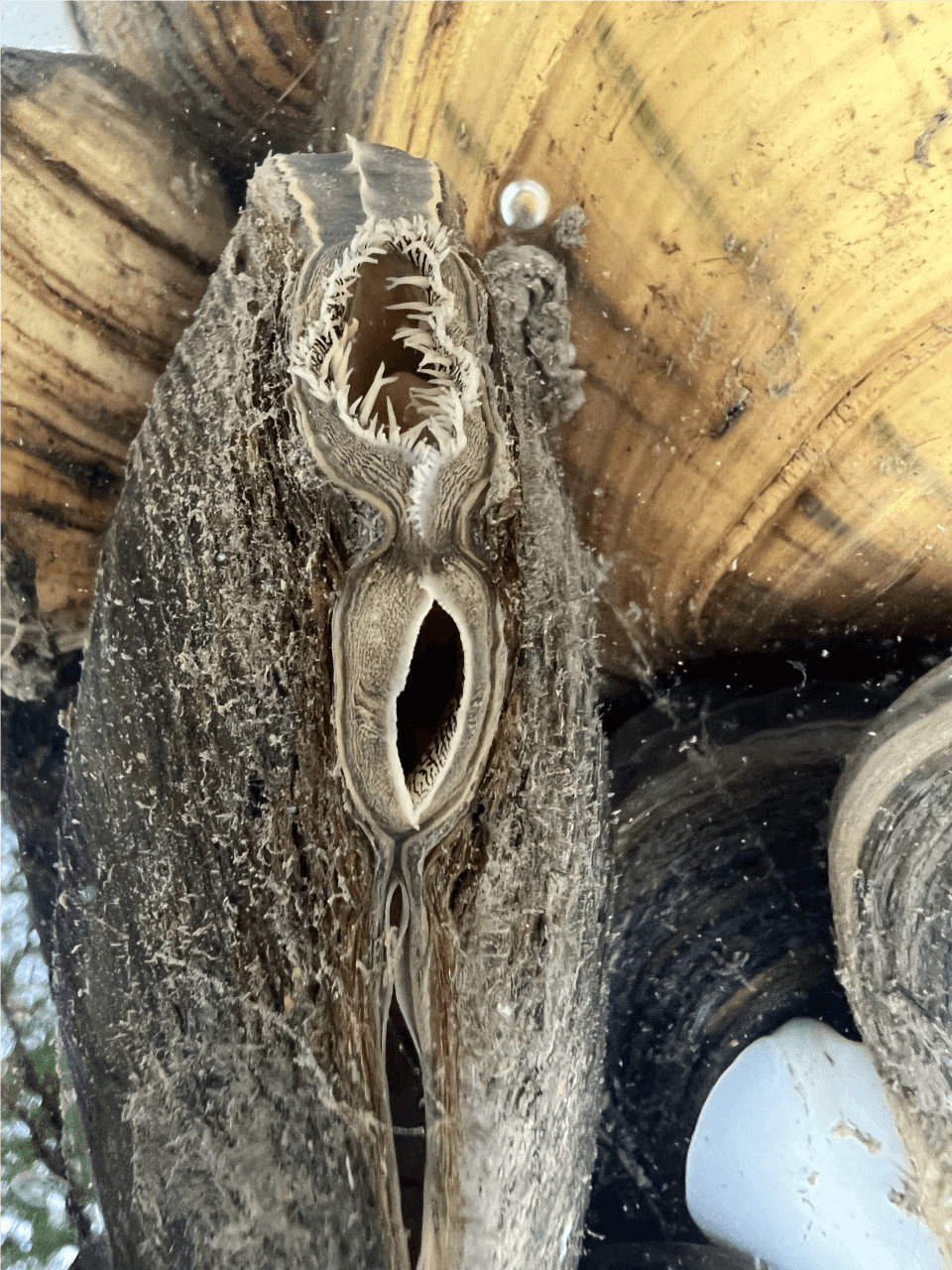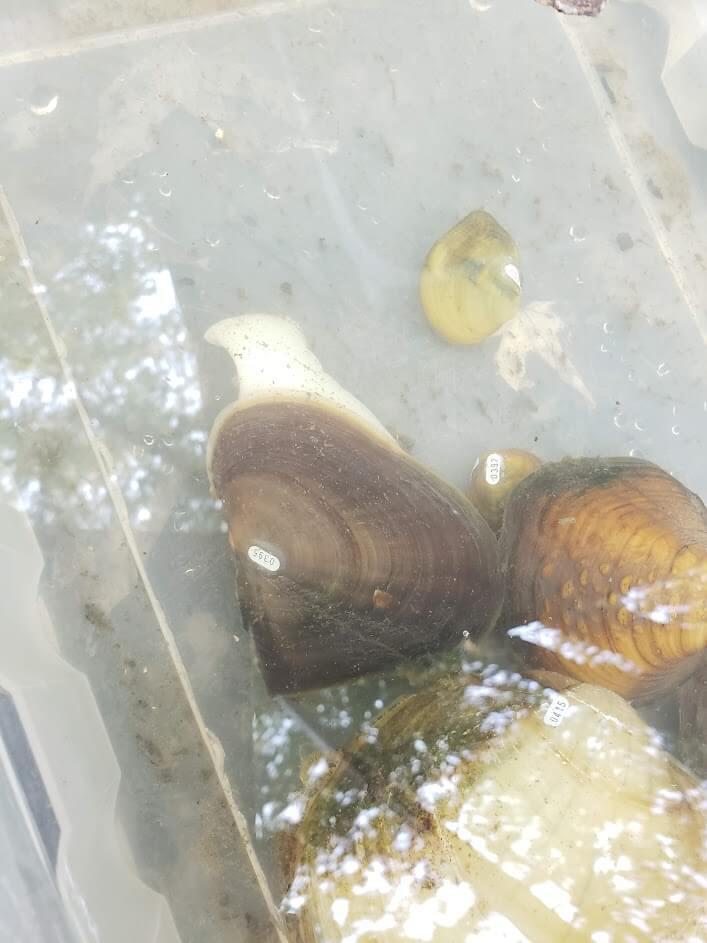Author: Saint Louis Zoo Insectarium Keeper Robert ‘Grey’ Andre

Last summer, the Saint Louis Zoo’s Insectarium was able to send two keepers, Laura Widmer and me, to assist in field surveys organized by the Illinois RiverWatch Network and The Upper Sangamon River Conservancy (USRC). These surveys were organized to gather information on the current health of freshwater mussels in Illinois rivers, as well as the overall health of the river system and how conditions are changing in that environment. Mussel species are highly sensitive, and so by researching them, we can learn important information about their environment.

Laura and I arrived at the survey sites around eight in the morning each day a survey was taking place. Often, we met with lead researchers Danelle Haake and Sarah Douglass, along with Citizen Science Coordinator for USRC Bruce Colravy, all of whom helped support the surveying. Our mornings on the river began with us carrying the equipment we would need for the day, such as collapsible workbenches, tubs to hold the mussels, and measuring calipers, down to the riverbed from field vehicles. Sometimes this was a short walk down a well-maintained path, but other days we hiked through mud and bramble to a steep slope that led to our testing site.
Once everything was unpacked and ready to set up, volunteers would start laying out the transects in which we would be searching for mussel species. Ten sections, each about 33 feet long, gave us a considerable amount of riverbed to cover. Thankfully for us, each survey had a dozen or more volunteers show up to assist in data collection. Once in the water, we were allotted 30 minutes to use our hands to sift the riverbed for any and all mussel species we could find. Pistolgrips (Tritogonia verrucosa), Plain Pocketbooks (Lampsilis cardium), and Fatmuckets (Lampsilis powellii) are just a few of the myriad of mussel species present within the Sangamon river. With each species we found, we learned something new and fascinating about them. Whether it was what specific host fish a species of mussel utilizes in its reproductive cycle, or how unique and otherworldly each species’ lures appear in order to attract said host fish.

After admiring our finds from the riverbed, we would tag, measure, and catalog each individual mussel for use in future studies. To do this, each specimen was given a waterproof tag that was affixed to the outside of the shells. They also had their width, length, and weight cataloged. Once we collected this information, a photograph was taken of each individual and it was released back into the specific transect where it was found.
All of this work provides us vital information. By tagging and photographing these mussels, researchers will know for future surveys which mussels were recaptured from previous surveys. The unique tag and repeated measurements will tell future teams about growth rate, mortality and distance moved for each individual. This data will also help researchers in understanding the overall health of the river system as the study progresses. Mussels are effective indicators of a river's overall health because most species will only thrive within waters that have not been exposed to a lot of pollution or other disturbances. If a few years go by in this survey and a noticeable decline in mussel numbers or individual mussels’ health is witnessed, it will be an indicator that something is negatively affecting the water quality of this habitat, telling us that further action may be needed.


